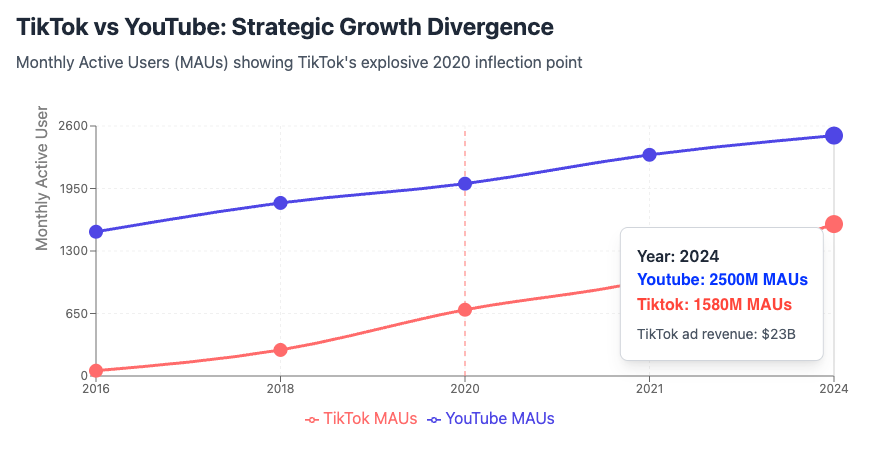
Strategy: What It Really Is (And Isn’t)
This post is a personal reflection on high level strategy, combining, frameworks from Roger Martin and my real-world company examples
Strategy: What It Really Is (And Isn’t)
What isn’t a strategy?
Let’s start with what strategy is not. It’s not a list of initiatives. It’s not a quarterly plan. And it’s definitely not a feature roadmap.
As a product manager, I’ve often found comfort in roadmaps, because they deal with things you can control, for example, engineering capacity, delivery timelines, budgets. You can plan, ship, and tick boxes. It feels like momentum.
But the truth is, you can launch five features in a quarter, hit every internal milestone, and still watch your core metrics stay flat. That’s because motion isn’t the same as progress and shipping things doesn’t mean you’re winning.
So, what is a strategy?
It’s not just about planning and executing, hoping for progress one release at a time.
Strategy is an integrative set of choices that define where you’ll play and how you’ll win. You choose the field. You choose the game.
You’re not just building a product. You’re solving a problem in a way that customers care about so deeply that they’ll choose yours, and they’ll pay for it, instead of picking another option. It’s not about being a little bit better. It’s about being the right fit for the job they need done.
Real strategy requires focus. It asks you to make trade-offs. And it forces you to commit to a direction. It may not feel comfortable, but it’s the only path to real and lasting impact.
The inputs for strategy
There are five essential questions that every strategy needs to answer:
1.) What is your winning aspiration?
2.) Where will you play?
3.) How will you win?
4. ) What capabilities must you build that others can’t or won’t?
5.) What systems and processes will support your strategy and help it scale?
These five elements are not standalone. They need to fit together and reinforce one another. A strategy falls apart if they’re not aligned or if one is missing.
You can think of strategy like a map. A good map shows you where you are and where you want to go. It also shows the terrain, the obstacles in your way, and the routes you can take. Without a map, you're just wandering. And without strategy, you're moving without direction.
----
Let’s take Tiktok as an example
Here’s how Tiktok's strategy can be broken down using the five questions:
1. What’s your winning aspiration?
TikTok didn’t try to replace YouTube or Netflix. Its goal was to become the go-to platform for short-form entertainment. Just moments, trends, and attention using 15 to 60 seconds VDO.
2. Where will you play?
TikTok chose to compete in mobile-first, short-form video. At the time, this space was mostly overlooked by traditional platforms. I was using YouTube for things like product reviews, tutorials, or travel videos — not quick entertainment.
TikTok went in a different direction. Instead of focusing on professional creators, it leaned into everyday people. The app made it easy for anyone to jump in, join a trend, and create something fun without overthinking it.
3. How will you win?
The experience was addictive. The swipe-to-scroll interface made watching feel effortless. The "For You" feed, powered by a real-time recommendation engine, gave users a fresh stream of content every time they opened the app.
TikTok also made content creation super simple. With built-in music, filters, and templates, anyone could become a creator. I remember trying to upload a video blog on YouTube once and barely getting any views.
4. What capabilities must you build that others can’t or won’t?
TikTok’s biggest strength came from "For You" algorithm. It could figure out what you liked within just a few swipes. While YouTube focused on channels and subscriptions, TikTok doubled down on content discovery and instant feedback. That shift in mindset was hard for even a platform like youtube to replicate quickly and successfully.
5. What are the enabling management systems?
TikTok scaled through localized content teams, creator incentive programs, and content that could be recreated and remixed easily across the world using The "Stitch" and "Duet" features.
The Outcome of Tiktok vs Youtube?
Instead of going head-to-head with YouTube on long-form video, TikTok chose to focus entirely on short, swipeable content, 15 to 60-second clips, full-screen viewing, and a highly personalized “For You” feed that adapted in real time.
This wasn’t just a product decision. It was a strategic one.

By 2021, TikTok had reached 1 billion users where YouTube responded by launching Shorts, but the gap was already visible. As the chart shows, TikTok’s user base surged during the Pandemic in 2020 and by 2024, it was earning $23 billion in ad revenue.
That’s what strategy looks like. It’s focused, shaped by user behavior, and hard to copy once it takes hold.
----
Another interesting company to study and learn from is Microsoft. From 2005 (Windows and Office Era), 2015 (Mobile and Cloud Era), and 2025 (Cloud and AI Era).

Microsoft didn’t stay in the top 10 by chance. They adapted, made bold strategic bets, and kept evolving with the world around them. That’s the kind of strategy (a portfolio of thoughtful choices) that lasts. And it’s the kind that’s worth learning from.
